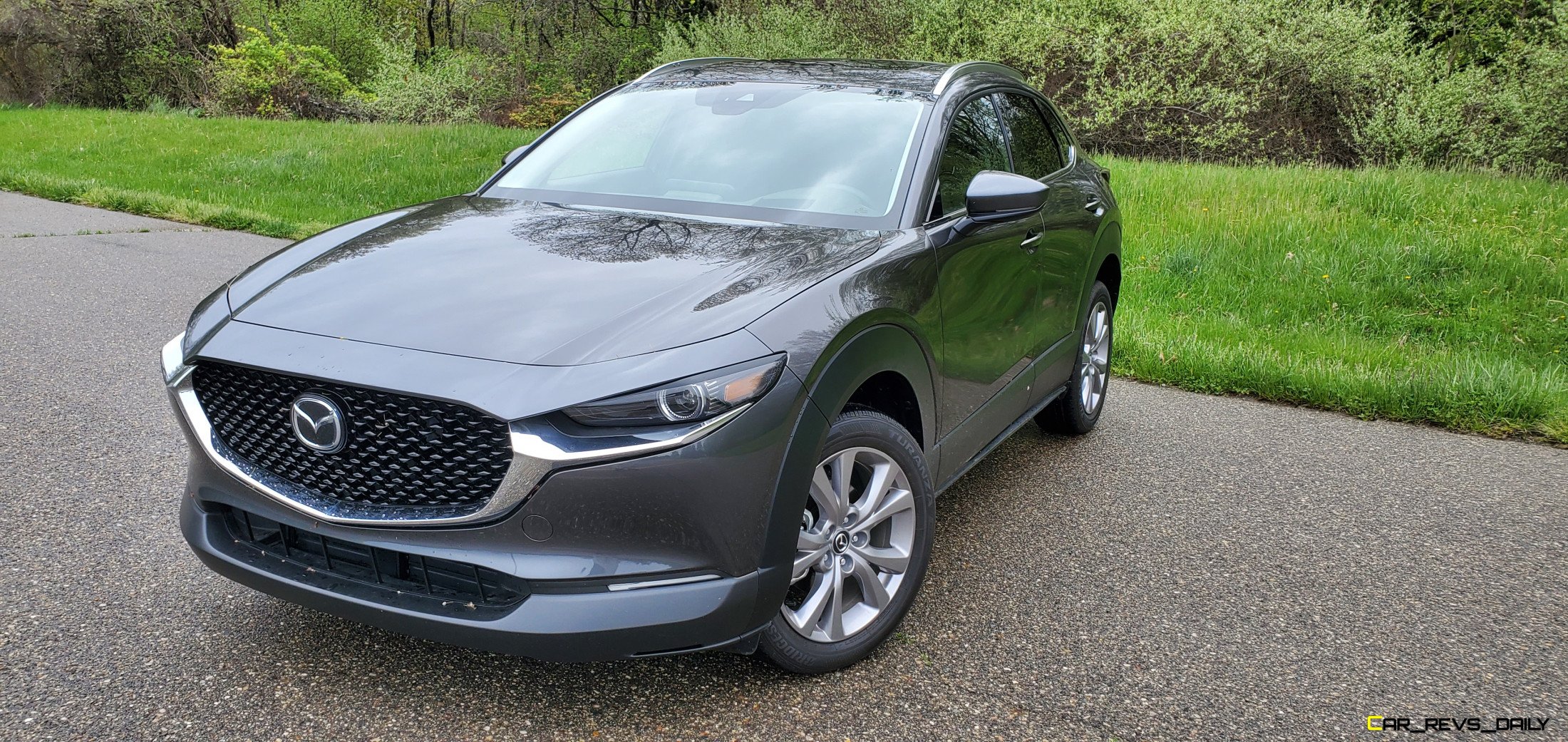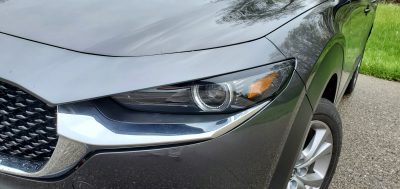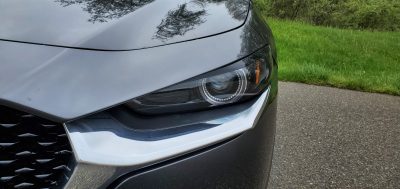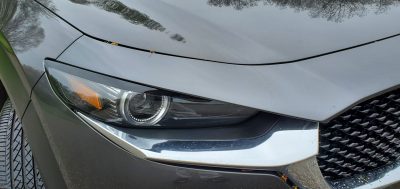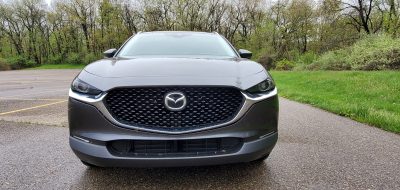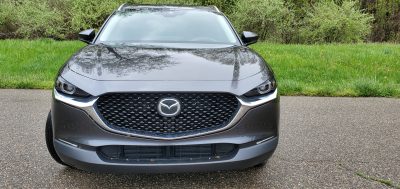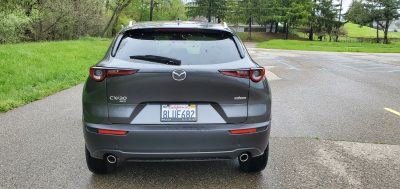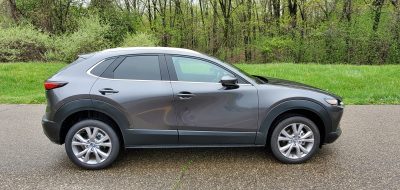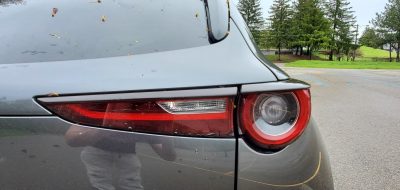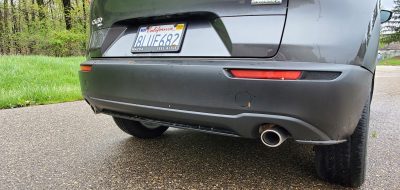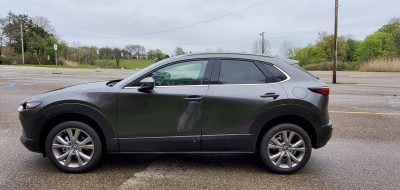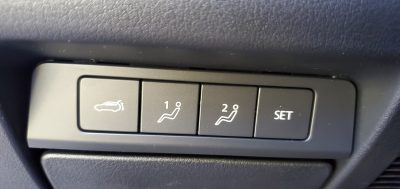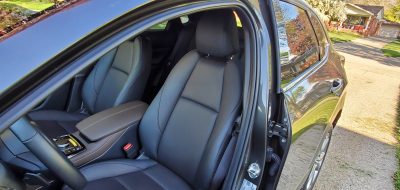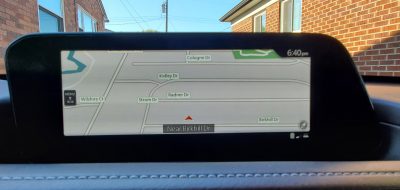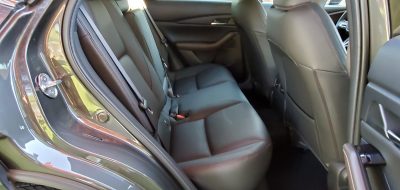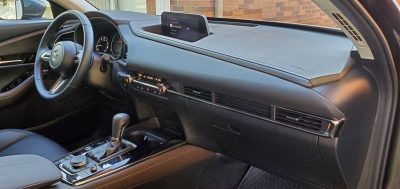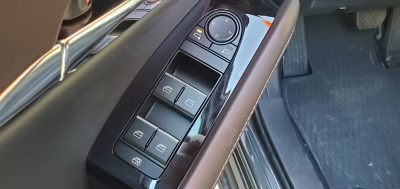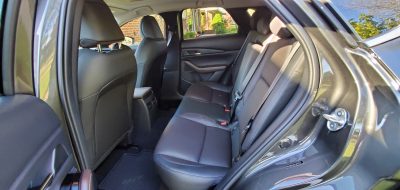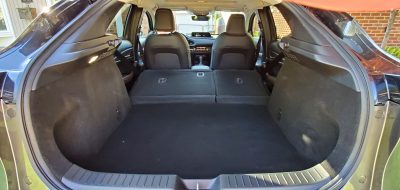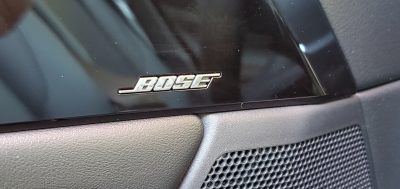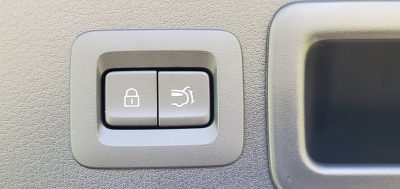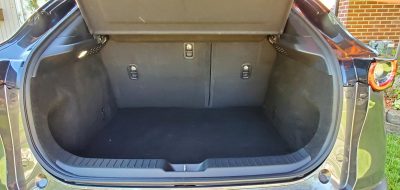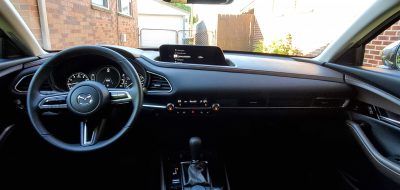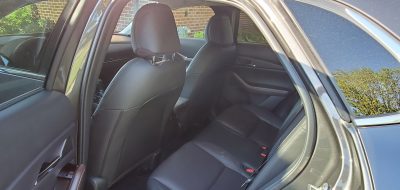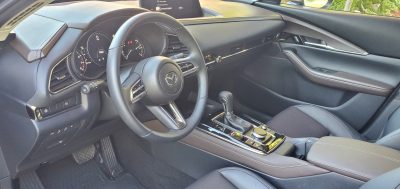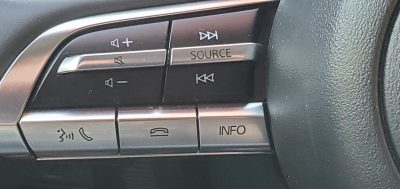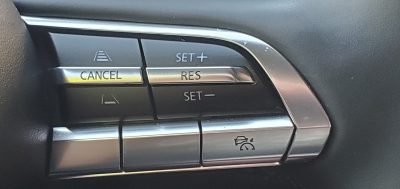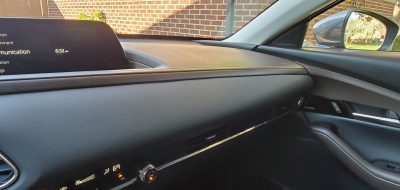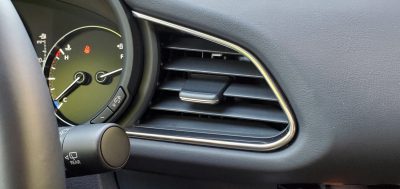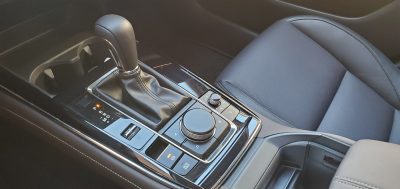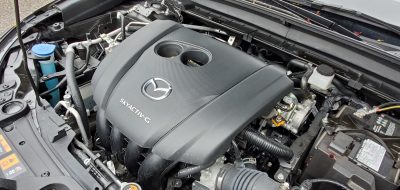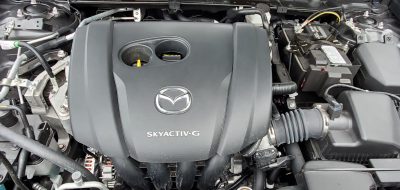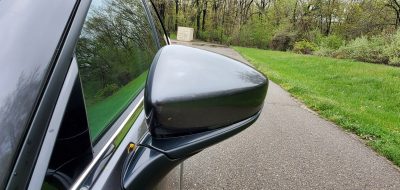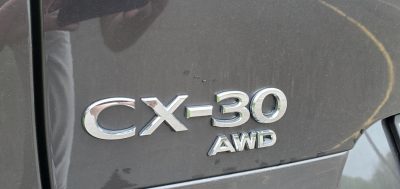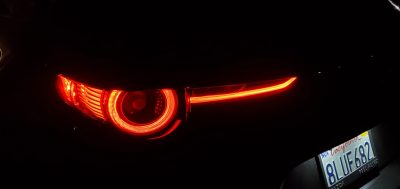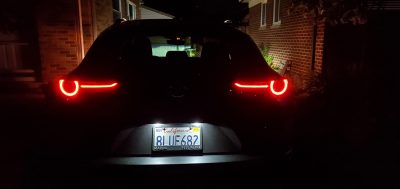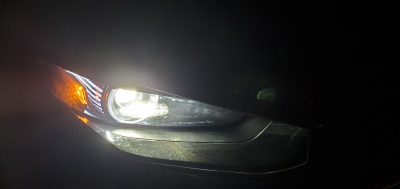When Mazda first began revamping their SUV lineup a few years ago, the Japanese automaker made it clear that it was keen on outdoing established rivals with a healthy blend of style and technology. This includes addressing a noticeable hole in their lineup, with the all new CX-30 crossover. But can the newest member of the Mazda family be the perfect middle ground for budget focused CUV buyers?
Mazda 3 Underpinnings Highlight Sensual Design:
The CX-30 is essentially a lifted version of the Mazda3, but like the sedan and hatchback it shares its platform with, the CX-30 has a very handsome design that not only looks very sporty, but is also mature as well. Utilizing the latest iteration of the Kodo based design, the CX-30 makes good use of its bigger underpinnings. The front fascia features a bold front grille that works well with the sleek headlights, and helps create a bold yet simple face for observers to look at. The CX-30 uses the classic long hood short rear end design trope, but unlike the Mazda2 based CX-3 CUV which looks awkward with the way it achieves this, the bigger CX-30 pulls it off much better, with the side profile looking more natural and less tacked on to the eye. The rear styling is perhaps the weakest link here, with the bloated rear bumper and the narrow tail lights not meshing as well together as they should.
That said, the CX-30 still has an edge when it comes to styling, with the Subaru Crosstrek, Honda HR-V, and the Nissan Rogue Sport all falling behind the sleek Mazda in aesthetics. The Mazda also competes with the Lexus UX 200, and while the compact Lexus does have styling that’s just as expressive as the Mazda’s, it’s also controversial, with the spindle style front grille being a very divisive conversation topic with buyers. When looked at as a whole, the exterior styling of the Mazda CX-30 is a welcome evolution of the basic Kodo DNA, it goes in some new directions, but it also retains plenty of the bold essentials intact.
Stylish Cabin Delivers The Goods:
Along with sharing the Mazda3’s platform. the CX-30 also manages to take a few pages out of its playbook when it comes to creating a stylish place for drivers to spend time in. The interior uses high quality materials, with many touch points being covered in either soft leather or thickly padded vinyl trim with both materials featuring tasteful contrast stitching to really drive home the premium undertones. The front seats have enough comfort for long hauls, yet they also have enough support and bolstering to hold occupants firmly in place when the road gets twisty. With all the space the front seats have, the back seats, in contrast, are far from spacious. A couple of average sized adults will fit there with no complaint, but seat three across, and it definitely becomes a cramped place to spend time in.
On the technology front, all CX-30s arrive with a standard infotainment system that is housed within an 8.8 inch touchscreen. The screen is not a touch unit however, with all functions being controlled via a prominent centrally mounted control knob. The knob is flanked by several shortcut buttons to access select functions easily, including the media menu that lets you pump tunes through the 12 speaker Bose audio system that was equipped to our tester. While the system is still loaded with features, the lack of a touchscreen makes navigating many aspects of Mazda Connect far trickier than it needs to be. For example, entering addresses into the navigation menu is time consuming, and setting key presets for the radio and contact book is frustrating at times. It’s obvious that Mazda engineers need to simplify the system, especially with key steps in some of the menus. Thankfully, buyers can use either Apple CarPlay or Android Auto to help mitigate some of the frustration, with Android Auto being assigned to navigation duties during our time with the CX-30.
But perhaps the most glaring weakness that the CX-30 brings to the table is cargo room, with the svelte Mazda offering 20.2 cubic fet with the back seats folded. Move them down, and the space expands to 45.2 cubic feet. This is significantly less space than the Honda HR-V (57.6) and the Subaru Crosstrek (55.3) with the two of them easily outgunning the CX-30 in this regard.
Competent Performance For Urban Commuting:
Performance for all CX-30s comes from a 2.5 liter naturally aspirated four cylinder engine making a balanced 186 horsepower and 186 lb-ft of torque. The engine is paired with a smooth shifting six speed automatic, and standard front-wheel drive. Buyers in snowier locales can equip all CX-30 trims with an optional all-wheel drive system. The EPA estimates all all-wheel drive CX-30s will deliver 25 mpg in the city and 32 mpg in the freeway. During our week with it, we noticed an average of 26 mpg which is very respectable for its class. The engine also has stouter figures than its rivals, but while the numbers are indeed impressive in theory, in practice the engine has a split personality disorder.
While our tester proved to be a good companion in city driving, freeway driving caused this initial good impression to come crashing down. Acceleration when going on to on-ramps and freeway lane changes was outright sluggish, with the engine preferring to deliver peak torque at a lofty 4,000 rpm. Switching our tester into Sport mode did help solve some of the problems, with the transmission hanging onto gears longer to allow the engine to reach that vaunted territory. However, that also causes fuel economy to go down, and also brings chronic engine droning into the cabin.
With the engine being a mixed bag, it was really encouraging to see our tester’s suspension pick up the slack. The tuning here is really balanced anc composed, with the CX-30 being sound and composed when going through urban commutes, yet still having enough grace and flow to make the Mazda a fun vehicle to toss around on local back roads. The steering is lightly weighted, but still delivers excellent sharpness in turns. This is thanks in part to the improved G-Vectoring Plus system. This novel technology actually reduces engine torque to the front wheels slightly when steering input is sensed. This allows the driver to load up the 18-inch Bridgestone Turanza EL 400 tires and that helps create enhanced levels of grip. You can’t feel the system formally engaging, but that’s not the point. The broader goal is enhancing the rest of the experience, and G-Vectoring certainly does a good job in making the crossover truly planted in sharp corners.
When you take in the package as a whole, G-Vectoring along with the suspension, drive train and the chassis all work together to create an offering that is not only compelling to drive, but also gives buyers a sense of fun that is missing from entries like the Subaru Crosstrek and others in its rapidly growing segment.
Value Quotient:
Pricing for the 2020 Mazda CX-30 puts the model right in the cross hairs of segment leaders, with the base model starting at $21,000. Meanwhile, the Select and Preferred Packages start at $23,900 and $26,200 with these two versions being the ones that Mazda expects to carry the workload for the CX-30 family in regards to sales. These two trims are also equivalent to rivals such as the Crosstrek Premium, as well as the Honda HR-V EX and EX-L models both of which are very well equipped for the money.
Choose the range topping Premium model like our tester, and you are greeted with a $28,200 base sticker. Our all-wheel drive equipped Premium tester had a final stciker of just over $30,000 thanks in part to the optional all-wheel drive system, as well as several other minor options. This pricing puts roughly on par with the HR-V Touring, Crosstrek Limited, and the Rouge Sport, which is very competitive company for any crossover entry. However, we think that buyers will ultimately adore the CX-30’s unique blend of style, luxury, and baked in performance. The latter is especially important, as other crossovers sacrifice the virtues of driving involvement for the maximum amount of USB ports or how many passengers they can fit inside the cabin.

Carl Malek has been an automotive journalist for over 10 years. First starting out as a freelance photographer before making the transition to writing during college, his work has appeared on numerous automotive forums as well as websites such as Autoshopper.com.
Carl is also a big fan of British vehicles with the bulk of his devotion going to the Morgan Motor Company as well as offerings from Lotus, MG, and Caterham. When he is not writing about automobiles, Carl enjoys spending time with his family and friends in the Metro Detroit area, as well as spending time with his adorable pets.

